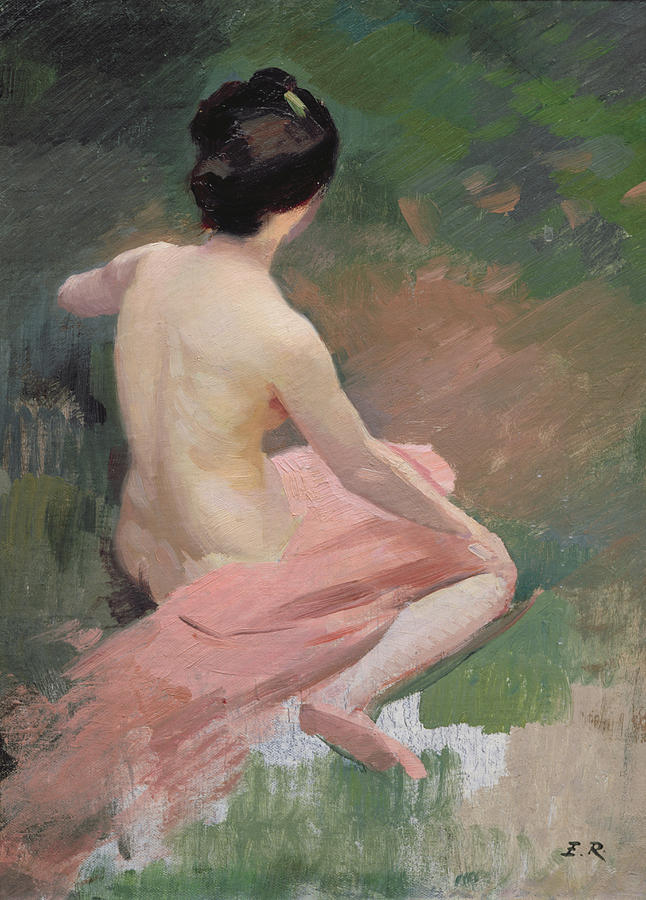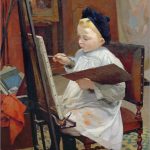
Renoux was the son of Jules Alphonse Renoux and Ernestine Veron. He showed early a talent for drawing and was still young when he went to live in Paris with his mother; her husband had abandoned her and had gone off to fight as a volunteer in the Franco-Prussian War of 1870.
A student of Jean-Léon Gérôme and Alfred Philippe Roll, Renoux studied at the École des Beaux-Arts and collaborated with Roll on the painted ceilings of the Hôtel de Viller, the Sorbonne and the Petit Palais.
Count de Zogheb’s Influence
Count de Zogheb, a well-known personality of the Belle Epoque, commissioned Renoux to paint his portrait, which was shown in the Salon of 1901. Count de Zogheb subsequently purchased many other Renoux paintings; this association earned Renoux two medals, the Imperial Order of Medjidieh and the Cross of the Knights of the Portuguese Military Order of Christ (which, with typical modesty, he never wore). A later patron was the industrialist Auguste Magnère, an amateur artist whom Renoux tutored.
Renoux exhibited in the Paris gallery of Georges Bernheim in 1916, and the public reception was an encouraging success, resulting in the sale of twelve paintings.
From 1922 Renoux exhibited at the Salon des Artistes Francais where he became a member. Ten of Renoux’s paintings are on permanent display at the Petit Palais, Musée des Beaux Arts de la ville de Paris. Source: Wikipedia.




